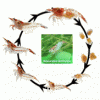Prohibited species and caring for our environment
-
Similar Content
-
- 1 reply
- 3649 views
-
- 3 replies
- 2183 views
-
Infected Tank?!? Yellow golden turn blueish and behave irritatedly
By CrookiestoPro9991,
- 6 replies
- 1823 views
-
- 19 replies
- 1782 views
-
help! Help! Ghost Shrimp sick with white/blue moldy head?
By zeragee,
- help with shrimp
- help identify
- (and 4 more)
- 6 replies
- 1740 views
-



Recommended Posts
Create an account or sign in to comment
You need to be a member in order to leave a comment
Create an account
Sign up for a new account in our community. It's easy!
Register a new accountSign in
Already have an account? Sign in here.
Sign In Now